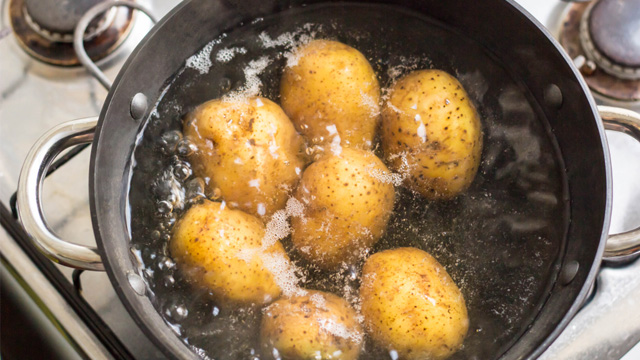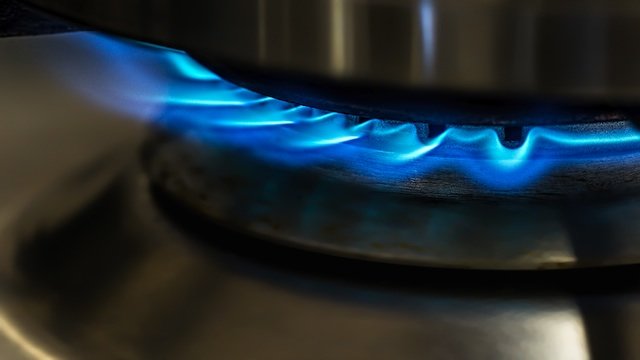It's no joke when prices of basic commodities rise to alarming rates. That's what's happening with the price of gas. You might think that the food you buy would not be affected, but the effects have an impact on more than just the actual food you buy.
Since liquified petroleum gas or LPG prices in Metro Manila went up last week, other gas prices have followed suit and are expected to continue to rise. In short, it might soon cost more to cook food at home.
Here's where you can make a choice: continue to use your beloved gas stove or abandon it to switch to an electric one, specifically the induction cooker. Also known as the induction stove, this electric-powered stove became a popular stove for many reasons, one of which was not through choice since many residential buildings prohibited the use of gas stoves in their dwellings.
You'll need gas to use on your gas stove, and this is an advantage should there be a power outage. Since induction cookers work using electricity, when the lights go out, your stove won't work either.
Even if you were not forced to use an induction stove and continue to use your gas stove, there are pros and cons that some feel is not enough to make them switch. Are you unsure about your choice of stove? Here are the differences you should know about the gas stove and the induction cooker:
1 Gas stove uses a flame. Induction cooker uses electromagnetism.
In the simplest terms and the most obvious difference, the gas stove uses gas aka a LPG tank to create a flame to heat up your pot or pan. This is known as radiant energy where the heat from the flame transfers to the cookware.
The induction cooker however works differently. An induction cooker works through electrical induction which basically means electricity or voltage is passed through coils to create heat. Here's where your cookware comes in: The material of the cookware is agitated by the electromagnetic reaction produced between the cookware and the induction stove's coil. This is how the stove heats up your pot or pan.

2 Gas stoves work with any cookware. Induction cookers need special cookware.
One of the reasons why gas stoves are universally loved is because you can use any cookware on it. It doesn't matter what kind of cookware you use on the gas stove; if it can handle a flame and high heat, it can be used on the gas stove.
The induction cooker however is more particular about the kind of cookware you use. Remember that this stove relies on magnetism to heat up the food, so if your cookware is not magnetic, the stove will not work.
To discover if you need to change your entire set of cookware to a new set, take a magnet and place it on the bottom of each pot and pan. If the cookware is magnetic and the magnet sticks to it, it will work on an induction stove since that is what will trigger the heating coils.
If you do not have the right cookware but also do not want to buy an entire set of cookware, look for an induction stove plate to place on the stove before using your non-induction-ready cookware.

3 Adjust the flames to control the heat on a gas stove. Use temperature and voltage to adjust the heat on induction stoves.
This is where it gets tricky for the induction stove. While it's easy to see the flame under your cookware and adjust your heat on a gas stove, the induction cooker is not as simple. Depending on the program you set your stove on, you can be looking at a voltage reading or a temperature reading. If the setting is in wattage, it's usually a range from a low or 150 (warm) up to 2000 (high heat). Basically, the higher the setting, the hotter it will make your pan while using up more energy.
If it's temperature, you'll see the numbers have the degree sign and range from 60 degrees C to 240 degrees C. Most cooking is done at around 180 degrees C so if you're stir-frying beef broccoli or searing steaks, you can jack it up to 240. If you're deep-frying, lower it down to 180 so your fried chicken doesn't burn before it's cooked through.
You may need to practice working with an induction cooker if you're used to a gas stove and it goes beyond the settings.

4 Gas stoves heat up gradually. Induction cookers heat up more quickly.
When it comes to speed, the induction cooker is the clear winner because the way that the cookware heats up doesn't need to travel from the flame to the cookware. This may be the biggest advantage of using an induction stove, and since it heats up so quickly, you spend less time waiting for the pan to heat up to temperature. You can start cooking almost as soon as you turn on the stove.
Are you going to make the change or stick to your gas stove?
[ArticleReco:{"articles":["20894","23137","24487","24673"]}]
***
